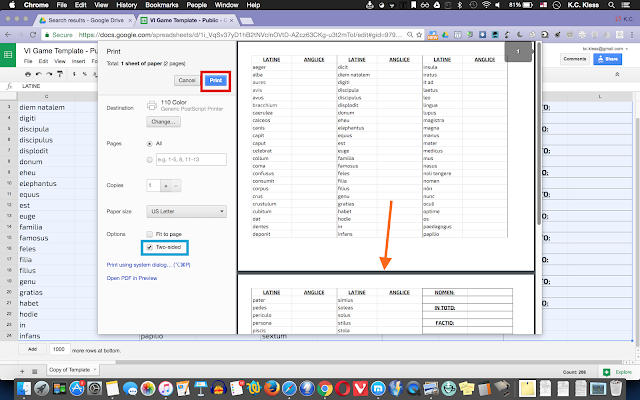Here is an activity I like to use that gives a bit more structure and a different feel to a basic Picture Talk. You could also describe it as a blend of Picture Talk with Dictatio. For more on Picture Talk, I like Chris Stolz's post for beginners. For more on Dictatios, Rachel Ash has a neat post collecting many different variants to use and keep things fresh.
The basic idea is that the disscusion about the picture follows a scripted format. We talk about 'a fact', followed by 'a fiction'. For my purposes, I kept the name of the game in the super simple cognate zone. If you'd rather do something like True/False, or use different terms, please do!
Materials & Setup:
You will need a picture showing multiple vocabulary terms that students can easily identify. They can already know the terms, or you can introduce the terms during this lesson.
 |
| This picture has so much fun stuff going on! It makes a great Factum / Fictio. |
- habet
- dat
- donum tibi habeo!
- gratias!
Students also need something to write down the facts - for this, I prefer an index card since they probably aren't going to write down more than 8 sentences.
Lastly, the way I have always done this activity is by projecting the picture onto a whiteboard and then drawing onto the whiteboard/picture combo. This type of setup is kind of essential to the activity, but if you come up with another way, I'd love to hear about it!
Running the Activity:
In my classroom, this activity occurs in 'Zona Latina' - so no English is used. Adjust as needed for your and your students' comfort with time in target language.
There are two phases to the activity, and students need to understand them well to be able to play along. The first phase is 'Factum' and the second is 'Fictio'. To make things more clear and more fun, we practice the 'special moves' below.
Factum:
| Factum! |
- Using at least one word from the list of targets, a student suggests one sentence that is clearly in the picture. Option: you can call them to the board to point it out in the picture.
- If you approve of the fact, lead students in doing the special move for 'Factum'. This official declares it as a fact. What is the special move? Using a professional announcer-type voice, announce 'Factum!' while pointing toward the sky from a powerful position. This move serves as their signal to write.
- Students write down the fact in Latin. You will repeat it as many times as necessary for them to get it down. They spell as best as they can - the goal of the activity is input!
- Using the same word from the list of targets, a student suggests one sentence that is clearly not in the picture, but can be drawn into it. Option: you can call them to the board to draw it themselves or have the official class artist draw it or draw it yourself.
- If you approve of the fiction, lead students in doing the special move for 'Fictio'. This officially declares it as a fiction. What is the special move? Using a jokey or creepy voice, dance like a jester while repeating 'Fictio'. This move serves as their signal to not write.
- Instead of writing, students call out encouragement & feedback to the person adding the drawing to the original image, e.g.:
- state the 'Fictio' over and over again
- use positive rejoinders (euge! quam pulchra! ita vero!)
- Repeat the cycle by going back to the beginning of 'Factum'.
What students love most about the activity is the end result - the picture filled with both facts and fictions. Here is the picture shown earlier as an example. Hopefully everyone can see the parts that are drawn into it. with the list of sentences below.
Facts:
persona habet donum.
persona dicit, "donum tibi habeo!"
persona dat donum.
persona non dicit, "gratias!"
Fictions:
persona habet lightsabrem.
latrina dicit, "donum tibi habeo!"
persona dat sellam.
persona dicit, "gratias!"
I think that covers it. Let me know if you try it out - and if you have multiple sections of a course, a great follow-up activity for the next lesson involves comparing the facts & fictions written by the other classes. Should that appear next on the blog? Thanks for reading.






















